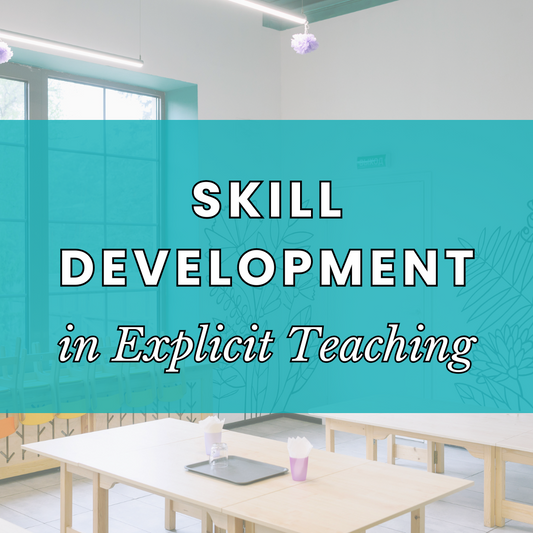
13 Tips for Modelled Instruction: A Guide for Teachers
Share
Tips on how to model a skill effectively are hard to come by. As educators, we understand the importance of modelling for our students. Modelled instruction is part of an explicit instruction lesson and is a powerful teaching tool that helps students learn new skills, strategies, and behaviours. By demonstrating our expertise and providing guidance and feedback, we can help students develop the confidence and competence they need to succeed. In this post, we'll explore 13 tips for modelling a skill (during the lesson 'I Do'), specifically for teachers, so you can improve your teaching and help your students achieve their goals.
What is Modelled Instruction (I Do)?
The “I Do” portion of a lesson is simply modelled instruction. The teacher demonstrates a skill whilst verbalising the thinking required to complete it successfully (think-aloud). Students are expected to watch and listen as the teacher completes an example. It is an opportunity for the teacher to be clear about how to meet the success criteria.



13 Tips for Effective Implementation
- Live Demonstration: Solve a math problem or write a paragraph in real-time (pen in hand, writing on the whiteboard), narrating your thought process. This helps students see the exact steps involved and understand how to approach similar tasks on their own.
- Step-by-Step Explanation: Break down a complex skill into smaller, manageable parts, explaining each step clearly. For example, when teaching multiplication strategies, focus on one step at a time to prevent students from feeling overwhelmed.
- Think-Aloud Strategy: Verbalise your thinking as you model a skill, such as interpreting a graph or solving an equation. This allows students to hear the reasoning behind each decision, making abstract processes more concrete.
- Use Visual Aids: Incorporate posters, diagrams, charts, or graphic organisers while explaining a concept. For instance, use a Venn diagram to visually compare and contrast ideas, helping students better grasp relationships between concepts.
- Real-Life Examples: Show how a skill applies in real-world situations, like demonstrating how fractions are used in cooking. This not only makes the lesson more engaging but also helps students understand the practical relevance of what they’re learning.
- Interactive Modelling: Involve students during your demonstration by asking them to predict the next step or spot potential errors. For example, pause while solving a problem and ask, "What should I do next?" This keeps students actively engaged and thinking critically.
- Multi-Sensory Approach: Use multiple senses to reinforce learning, such as using gestures, writing key points on the board while explaining them out loud. This caters to different learning needs and helps reinforce the information through multiple channels.
- Use of Exemplars: Show students examples of high-quality work and break down why they’re effective. For instance, analyse a well-written essay, pointing out the structure, use of evidence, and clarity of argument, so students understand what excellence looks like.
- Think-Pair-Share: After modelling a skill, have students briefly discuss with a partner how they would apply what they’ve learned, then share their thoughts with the class. This encourages students to process and articulate their understanding, reinforcing the modelled instruction.
- Q&A During Modelling: Encourage students to ask questions while you are (or when you are finished) modelling a skill, addressing any confusion immediately. This not only clarifies understanding but also ensures that students are engaged and following along.
- Checking for Understanding: Use mini whiteboards to have students quickly write down or draw their responses to a question or problem you’ve just modelled. This provides you with immediate insight into their comprehension and allows you to address misconceptions right away.
- Cold Calling: Select students randomly to answer questions during the modelling phase, ensuring everyone stays focused and ready to participate. This technique keeps students engaged and allows you to assess understanding across the entire class.
- Recap and Reinforce: After completing the modelled instruction, summarise the key steps and concepts, then ask students to restate what they’ve learned. This reinforces the material and helps solidify their understanding before moving on to independent practice.
Modelling a skill is an essential part of effective teaching. By using these 13 tips for modelling a skill, you can help your students develop the confidence and competence they need to succeed. Remember to demonstrate, explain, provide feedback, and reinforce the skill regularly, and celebrate your students' successes along the way.
Follow my Instagram page for more explicit teaching tips, tricks and free resources.



